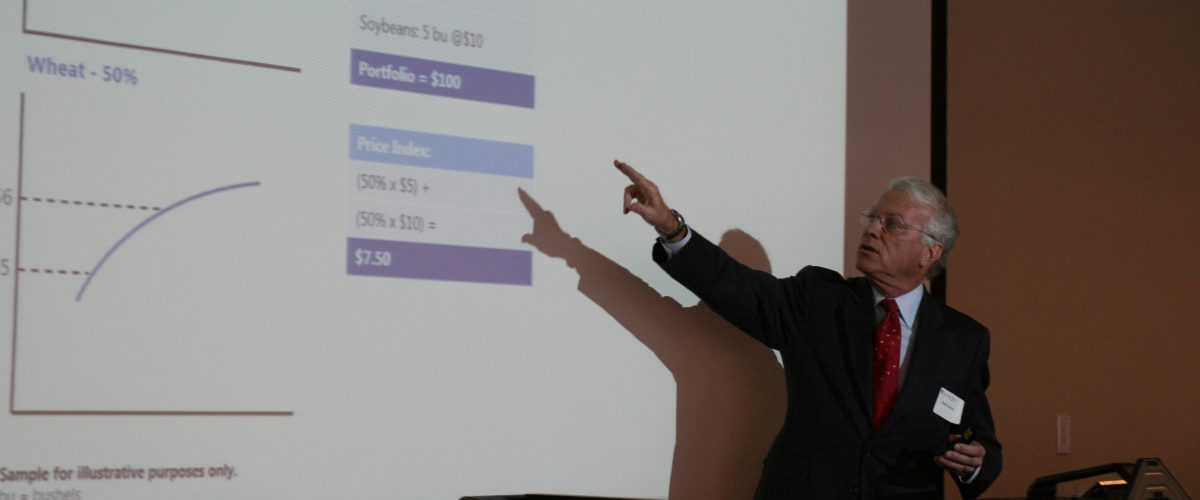
PIMCO executive a featured guest of CU Denver’s J.P. Morgan Center for Commodities
DENVER – When world stock markets plunged on Black Monday in October 1987, one asset class held remarkably steady.
“If you looked at the markets and economy through the eyes of the commodity index, people kept drinking their coffee, eating their Wheaties,” Robert Greer, executive vice president and manager of Real Return Products at PIMCO, told a large CU Denver Business School audience at a lunchtime discussion on Jan. 23. “There was no change in supply and demand for commodities. That is an example of fundamental economic diversification.”
Greer, who is regarded as the first person to define an investable commodity index, explained the fundamentals of “Commodity Index Investing” as a featured presenter in the Business School’s J.P. Morgan Center for Commodities. Before joining PIMCO, Greer spent eight years managing the commodity index business for Daiwa Securities and then for both Chase Manhattan and J.P. Morgan.
“Commodities give you a diversification of the risk factors that you’re exposed to,” he said. “That doesn’t ensure that commodities will go up when stocks go down, but at least you’re exposed to a different set of risk factors.”
In the mid-70s, when Greer hand-recorded historical commodity prices on a legal pad in a public library, the idea of commodities being an investable asset class was outside of the mainstream. For the CU Denver Business School audience he made the case that investors can make better decisions in a world of uncertain market forces if they have an understanding of the role commodities play.
He said major benefits from commodity investing include:
- Diversification from stocks and bonds
- Inflation protection
- Historical returns comparable to equities in both magnitude and volatility
Looking at the history of commodities indexes back to their start in the 1970s, Greer said, returns on commodities fare comparably to equities — 9.2 percent to 10 percent. “Over long periods of time the idea that you’re getting equity-like returns with equity-like volatility seems to apply.”
Greer gave a fascinating and nuanced presentation about components within commodity index investing: futures contracts, roll yields and convenience yields, supply and demand, time-period cycles for different industries, and the U.S. dollar’s impact on commodities. He also shared strategies on how to make commodities investing work for you.
A key strategy is one that is employed by investors of other asset classes: rebalance. “If your commodity prices are moving in a somewhat uncorrelated fashion you get a benefit from what Harry Markowitz (founder of modern portfolio theory) taught us to do with any portfolio: You periodically rebalance,” Greer said. “You sell what goes up and you buy what goes down.”
Greer explained the many ways the asset class of commodities — which have moved closer to the investing mainstream in the last 15 years — deliver returns to investors. “You’ll note there are no formulas and no Greek letters in what I’ve just described, but there is a dose of Economics 101 and a little bit of plain common sense.”
After fielding numerous questions during the discussion, Greer concluded by again evoking Markowitz: “Remember Harry’s comment above all: Predictions cannot be beyond doubt or error. What we are trying to do is offer an asset class that will protect from some of this uncertainty.”


